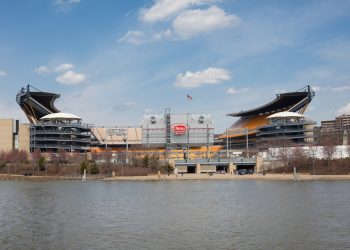 RISMedia, June 9, 2011—In cities like Los Angeles, where the car is king, the thought of commuters leaving their automobiles behind and opting for public transportation once seemed unimaginable. But CBS Evening News recently reported that Los Angeles commuter rail ridership had increased 8 percent from last year’s figures.
RISMedia, June 9, 2011—In cities like Los Angeles, where the car is king, the thought of commuters leaving their automobiles behind and opting for public transportation once seemed unimaginable. But CBS Evening News recently reported that Los Angeles commuter rail ridership had increased 8 percent from last year’s figures.
The rules of the road are shifting. High gas prices, climate change, and environmental awareness are altering the real estate landscape. The result is that more people are looking to work closer to home, not only because commuting is becoming more expensive, but also because of growing concern over car-centered life and its impact on greenhouse gases.
The lure of suburban developments, often located many miles from city centers, once offered both a relief from the bustle of urban life, and also the opportunity to get more home for the dollar. But with rising gas prices and hours braving rush hour traffic, the costs are outweighing the benefits.
Add growing awareness of a nation hooked on foreign fossil fuels, and the result is a paradigm shift in homebuyer consciousness.
“When words like sustainability, carbon footprint, and arctic snowcaps are entering our everyday conversations, it’s clear that climate change is affecting homebuyers’ decisions,” says Myra Nourmand, Los Angeles Real Estate Broker and author of the book From Homemaker to Breadwinner.
More than before, consumers are factoring the price they’re paying at the pump as well as their commuting time into their overall buying decision. In addition, the current economic slump means that people are working longer hours for the same pay. Thus long commutes add strain to an already stressed out workforce. Nourmand believes that these are key reasons why buyer demand remains high in areas like Santa Monica, Beverly Hills, Brentwood, Bel Air, and Hancock Park.
Historically, the three-part formula for high curb appeal has been prime location, attractive architecture, and sought-after square footage. The burst of the housing bubble caused a home’s price to take precedence above all else—at least that’s what it seemed like based on media reports. Where Nourmand works, however, location, architecture, and square footage remain at the top of buyers’ priorities.
“None of my clients are short-selling their homes, so you won’t find any fire sales among my listings,” says Nourmand.
In addition, foreclosures and subprime fallout are non-existent within her housing inventory. Meanwhile, comparably prestigious outlying areas, which were often viewed as alternatives to high-end L.A. neighborhoods, have experienced hard times.
“If high fuel prices are the norm—and that’s what the news indicates—then demand for property in desirable neighborhoods near urban centers should remain strong,” says Nourmand.
To learn more about real estate sales trends visit http://www.homemaker2breadwinner.com.










